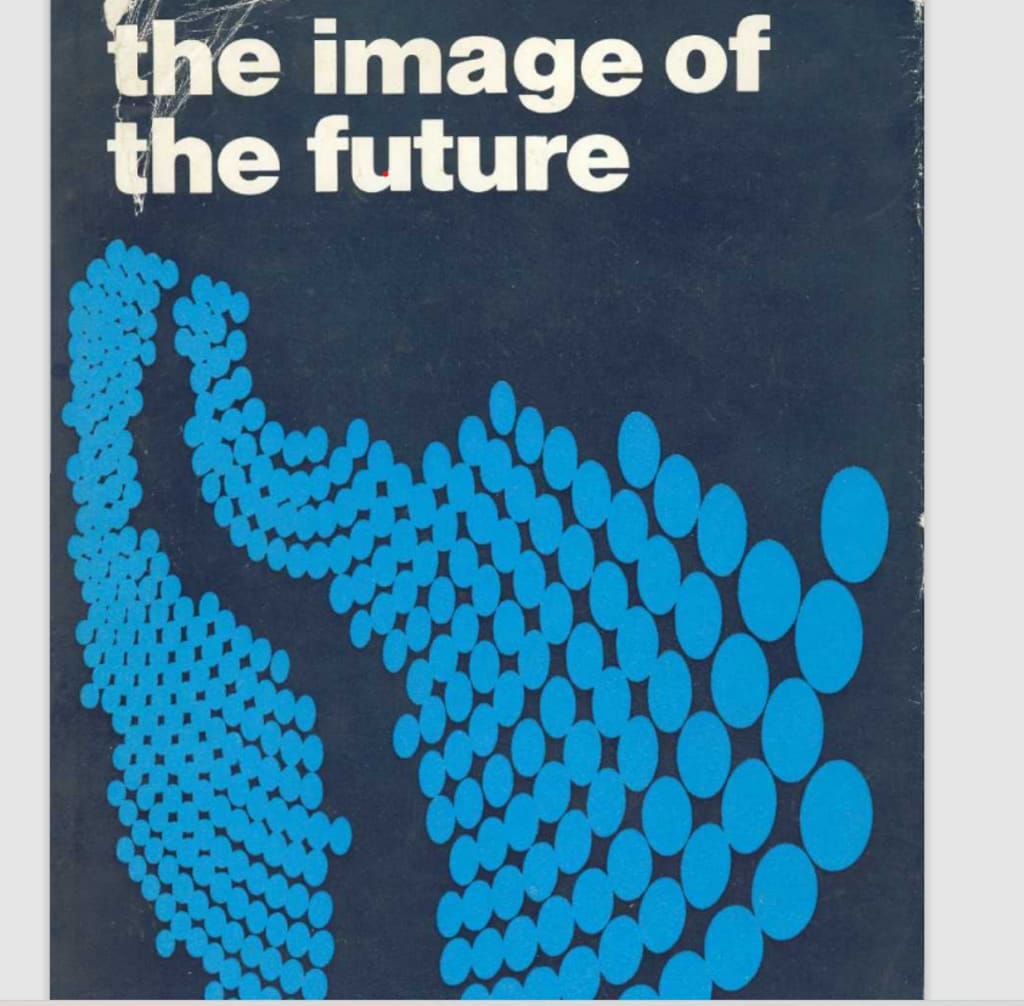I was at a workshop in Cambridge during the summer, called ‘People and Patterns”, hosted by the Centre for the Study of Existential Risk. The workshop was designed by Sarah Woods and Paul Ingram, as part of a research project that is trying to combine narrative and systems to develop new approaches to thinking about risk. It’s a new project—it’s been running since January 2023–and this was a pilot workshop to test some thinking. I was asked to contribute some remarks on the role of positive images of the future to the group, which had a very diverse range of backgrounds. This is a version of what I said.
Double helix
The post-war history of futures can be imagined as a kind of double helix, with two strands wrapped around it. The first strand is positivist and analytical, and built around forecasting, and came out of RAND and SRI in the United States, funded by the Department of Defense. The second strand is normative and more intuitive, and more aligned with visioning, and it emerged in Europe before migrating later to the Pacific—in Australia, Hawai’i, and Tapei.

The book that exemplifies the second strand was written in the early 1950s by Fred Polak, a Dutchman who lived through the second world war and the destruction it wrought on his homeland. Polak was Jewish, and had had spent some of the war in hiding. That book is The Image of the Future, and the money quote in that book goes as follows:
“The rise and fall of images of the future precedes or accompanies the rise and fall of cultures. As long as a society’s image is positive and flourishing, the flower of culture is in full bloom. Once the image begins to decay and lose its vitality, however, the culture does not long survive.”
There’s a thread that runs from Polak to a whole group of futurists who belong to that second strand. We have an English version of Polak’s book because the Quaker and peace activist Elise Boulding taught herself Dutch so that she could translate it. In her own work, collaborating with Warren Ziegler, she ran workshops that asked people to imagine a world without weapons.
Images of the future
Jim Dator, in Hawai’i, also developed the ideas in Polak’s book. Even if we have no future facts, he said, we all have images of the future, and part of the task of futures is to make this process less unconscious and more conscious. His work suggests that when you look across the images of the future in dozens of scenarios sets, there are four dominant image archetypes. These are Growth, Discipline, Collapse, and Transformation.
Why does this matter? Well, Robert Jungk, who spent his life trying to reclaim futures from political and economic elites, tells a story about working with some German young people, selected through a competition run by a German television station. They were, he was told, “deeply pessimistic”. And yet, when he worked with them through his ‘future workshops’ process, the images they produced of the future were much more positive and much more hopeful.
He asked them to explain why this was. One of the youngsters replied:
“It’s obvious. In the competition we were asked what kind of future we expected. Here, we were asked what kind of future we want.”
Seeds of change
All of these examples come from the deeper history of futures, so I’d like to bring it up to date for a moment. I’m a big fan of the ‘seeds of change’ approach, developed by the Good Anthropocene Project in Southern Africa. That starts with weak signals of positive change and asks people to imagine what the world would be like if that idea was completely mainstream.
As Rebecca Solnit says in lovely book Hope in the Dark: “What we dream of is already present in the world.” The academic Ruth Levitas might describe this as being about utopia as a form of desire. What this is about—what all of this is about—is lifting the weight of the present off our shoulders, for long enough that we can look up and look out.
Brutally honest
There is a post-script to this: One of the other workshop participants was concerned that my emphasis on positive visions of the future was part of what he called a trend of “toxic positivity”. Wikipedia defines toxic positivity like this:
Toxic positivity is a “pressure to stay upbeat no matter how dire one’s circumstance is”, which may prevent emotional coping by feeling otherwise natural emotions.
So it’s probably worth a moment of clarification. The best strategic foresight work needs to be brutally honest about the structural and other conditions in which we attempt to make our futures. Misquoting Marx: we make our own futures, but not under the conditions of our own choosing.
Space for agency
But the purpose of creating positive images of the future as part of this work is two-fold. The first is that it generates just enough space for us to imagine that some change for the better is possible. The second is that without being able to imagine a different possible future, we have no space for agency.
This connects to a bigger and longer story: much of the forecasting and planning-focussed futures work in ‘Strand 1’ explicitly believed that it wasn’t the purpose of futures work to try to influence the future. I don’t have time to dive into the reasons for that here, but the effect of this is to take power, and ethics, out of the discussion of the future.
